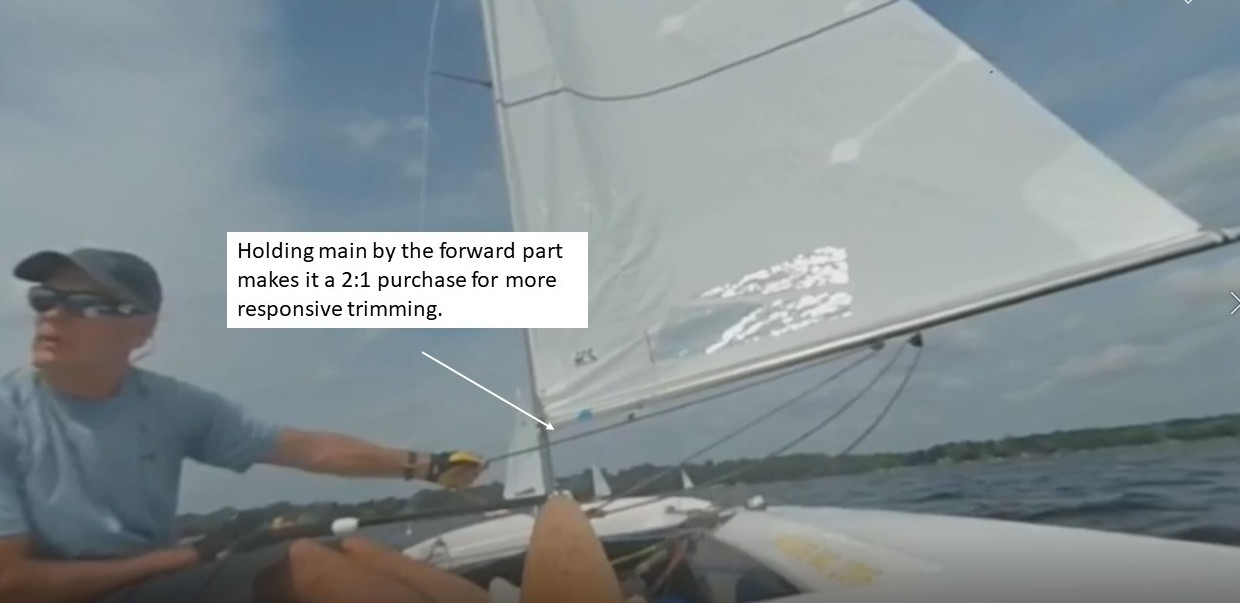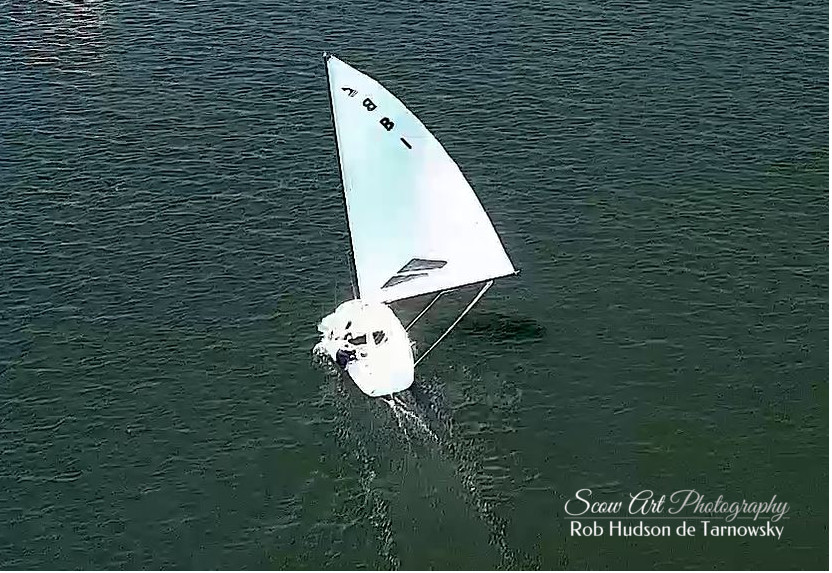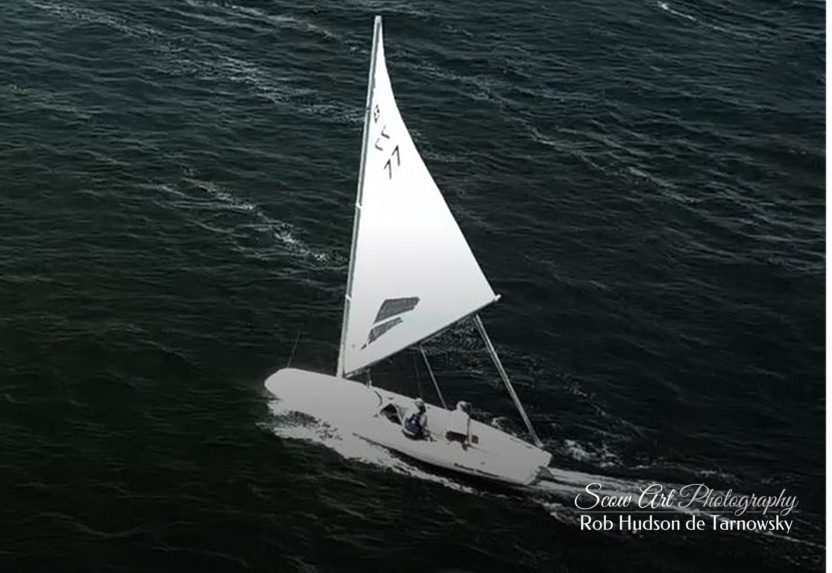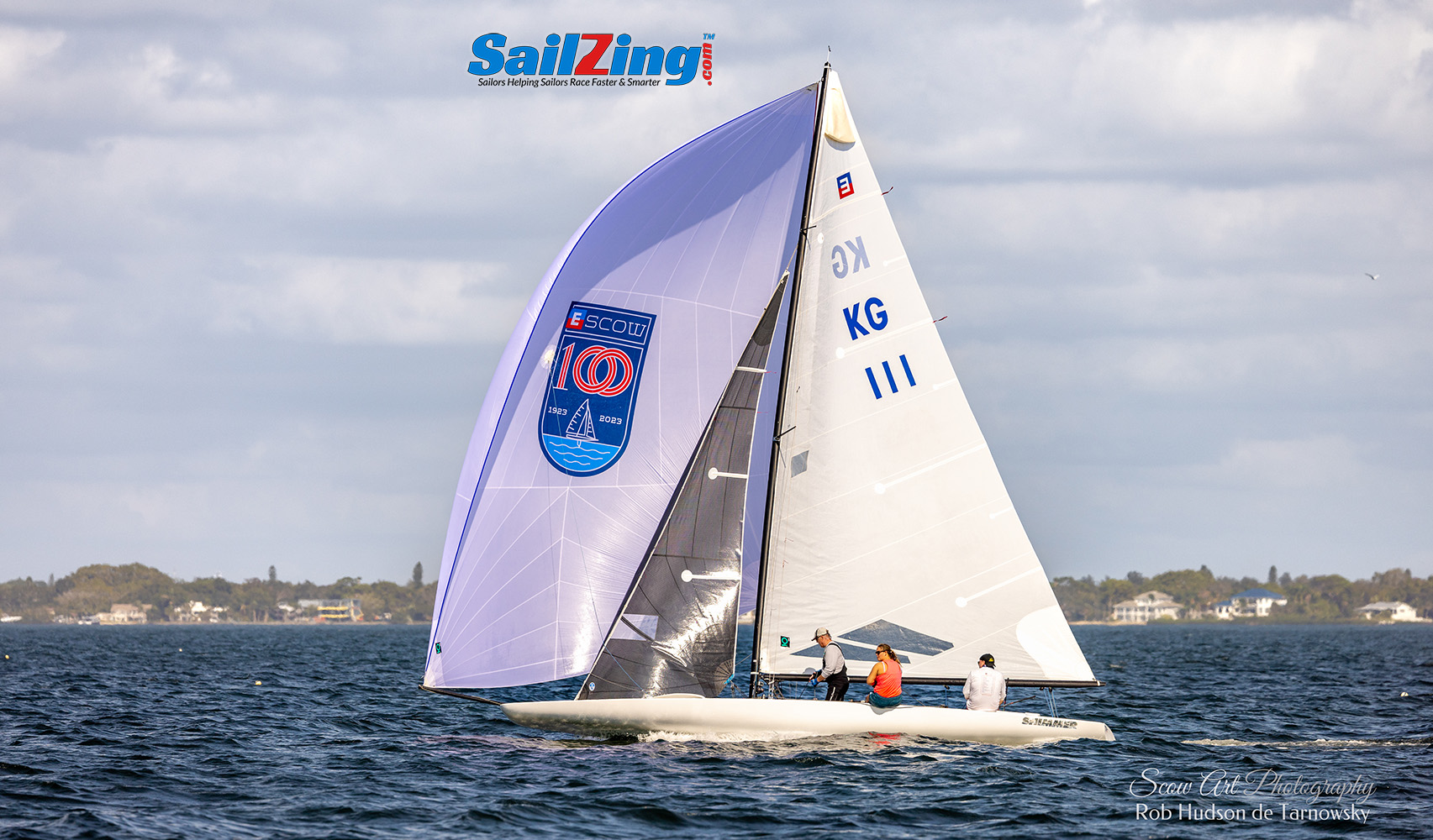Sailing downwind fast and controlled in all conditions is easier with a few simple techniques to manage the mainsail’s twist, especially in the upper leech. In this article, we’ll discuss downwind trimming strategies for different conditions using the mainsheet and vang.
Twist and the Upper Leech
Twist is the change in angle of attack from a sail’s foot to its head. The photos below show an un-twisted (left image) and relatively more twisted (right image) sail shape in two C scows downwind.
Managing twist is especially important in the upper leech, which exerts a lot of leverage on the boat and is easily affected by changes in the wind.
Why is Twist Important?
- In dynamic conditions, such as puffy winds and waves, a twisted sail ensures that at least some part of the sail is trimmed correctly.
- Twist also helps in light air, where the wind at the top of the sail may be at a different angle than near the surface.
- A twisted upper leech frees up the boat:
- If twisted forward of the mast, the upper sail helps heel the boat to windward, reducing wetted surface. See this video from Mike Considine of UK Sailmakers discussing how he eases the vang to get more windward heel.
- Reduces weather helm, making it easier to steer up and down for waves and to intercept puffs.
- Lets you sail further by the lee to intercept a puff or fetch a mark without gybing.
When is Less Twist Important?
- In more steady conditions, a less twisted sail gives you more power, since each part of the sail is trimmed correctly. In a uniform breeze, a highly-twisted sail will be over-trimmed down low and under-trimmed at the top.
- Too much twist twist in the upper leech is unstable. A strong puff will twist the upper leech excessively and push the mast to windward, resulting in a death roll. See our post on Capsize Causes and Solutions – Part 2: Off-wind Balance for more.
Downwind Trimming Strategies
When sailing downwind, the vang and mainsheet give you different capabilities to manage twist and tame the upper leech.
- The vang pulls down on the boom, which directly controls twist by tensioning the leech.
- The mainsheet pulls the boom more sideways than down, changing the angle of attack of the sail. This doesn’t affect twist directly, but does allow you to position the upper leech.
- The mainsheet is easier to adjust rapidly than the vang.
These capabilities argue for different strategies to manage the upper leech, depending on wind and wave conditions.
In flat water and steadier wind, keep the boom out and manage the upper leech with vang
This strategy minimizes twist to maximize overall power, but requires playing the vang to control the upper leech. You’ll need a lot of vang as the wind comes up. Some top sailors keep the vang uncleated and play it as the wind changes. See this video from Roelof Bouwmeester on how to set the vang.
In this strategy, use your mainsheet to change angle of attack as you go “up in the lulls and down in the puffs.”
In waves and puffy conditions, set the vang and work the mainsheet to control the leech
This strategy gives you the benefits of twist, while letting you rapidly control the upper leech. This lets boat be free, heeled up to windward for speed, with little or no weather helm. To use this strategy, you must set up to play the mainsheet aggressively.
- Release the tail of the mainsheet and grab the forward part, making the sheet a 2:1 purchase. See the picture below.
- Set the vang to position the upper leech for the average wind speed.
- As the wind speed changes, aggressively trim or ease the main.
- When a puff hits, trim in to keep the leech from going too far forward.
- Ease when the puff subsides.
- During lulls, head up and trim in.
- Trim or ease the main to help you steer.
- To bear off, ease the main, heel to windward, and let the boat turn down.
- To sail higher, trim the main and let the weather helm turn the boat up.
- At the crest of a wave, rapidly pump the main in to get over the top.

Related Content
Avoid the Slows: Downwind Boat Speed Checklist
Sailing By the Lee: A Primer





